

Perhaps you turn to sweetened desserts to make up for lack of sweetness in other aspects of your life. Or maybe you just enjoy the taste. In any case, you deserve some sweetness in your life…every day! So be sure to get some, whether from food or from the special people and relationships in your life. And wouldn’t it be great to get the sweetness you deserve without compromising your health?
I’d like to start by sharing some facts about sugar…to help you naturally turn away from the addicting sweet stuff.
Besides contributing to obesity, diabetes and tooth decay (as if that’s not enough), the hazards of refined white sugar and high fructose corn syrup are wide-spread. Articles and books abound describing the hazards of sugar consumption. The link between sugar and serious disease has been published in the scientific literature for a very long time.
Sugar has been known to contribute to disease as far back as the early 1900’s. In the 1930’s, the Nobel Prize was awarded to Otto Warburg for discovering the connection between sugar and cancer. Cancer is a little more serious than obesity and dental cavities, yet the connection is not often mentioned in mixed company.
In the 1950’s the work of Dr. Coda Martin strongly related sugar to serious disease. The complete article can be found at:
http://www.globalhealingcenter.com/refined-sugar-the-sweetest-poison-of-all.html
Here’s an excerpt:
“Refined sugar is lethal when ingested by humans because it provides only that which nutritionists describe as “empty” or “naked” calories. It lacks the natural minerals which are present in the sugar beet or cane. In addition, sugar is worse than nothing because it drains and leaches the body of precious vitamins and minerals through the demand its digestion,detoxification and elimination makes upon one’s entire system. So essential is balance to our bodies that we have many ways to provide against the sudden shock of a heavy intake of sugar.”
More recently, research has connected sugar to a broad spectrum of modern ills.
Sugar is a major culprit obesity, which effects 34 % of Americans (another 32% of Americans are considered overweight) and contributes to such killers as heart disease, diabetes and cancer. A report from the American Heart Association published in the journal, Circulation on July 23rd, 2002, suggests that high sugar diets may contribute to an elevated risk of heart disease, lower your HDL cholesterol, increase your LDL cholesterol and raise your level of triglycerides.
Sugar can also impair the structure of DNA, cause hyperactivity, anxiety, difficulty concentrating, and crankiness in children, weaken eyesight, contribute to eczema, interfere with the absorption of protein, decrease the activity of your T cells, which contributes to the reduction in defense against bacterial infection, contribute to candida (yeast) infections and contribute to osteoporosis.
These are just a few good reasons to decrease or eliminate sugar. There are many more. In fact, there is a list of 146 reasons sugar is ruining your health in the book, Lick Your Sugar Habit, by Nancy Appleton, PhD, clinical nutritionist. And Dr. Scott Olson ND, in his ground breaking book, Sugarettes, claims that sugar is responsible for more deaths than cigarettes, and just may be more addicting!
Yet in spite of all the evidence against it, sugar remains by far the most popular food in the world. Americans insist on feeding their kids pure sugar to start their day…Captain Crunch, Coco Crispies and Frosted Flakes are just a few of the most popular sugar laden breakfast foods.
The average American consumes almost 152 pounds of sugar in a year. This is equal to 3 pounds, or 6 cups, EVERY week — 42.5 teaspoons of sugar per day! And since my family doesn’t consume any, so someone out there is eating our share!
So why do we continue to eat sugar, in spite of its bad reputation? Because we are addicted! And because it tastes good. And it gives you a temporary feeling of wellbeing!
White sugar and high fructose corn syrup have no nutritional value and should never be consumed. 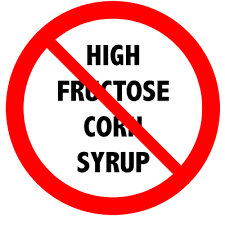
After my major health challenges when I was in my 20’s, I gave up sugar cold turkey. I went from a complete sugar addict, eating Oreos by the package and ice cream by the pint to nothing. Zero, zip, nada. Sure, I ate my share of dates and sweet fruit, but nothing crossed my lips if it ended in “ose” or was a purified sweetener poured from a bottle or spooned from a bag.
That went on for 20 years or so, until I discovered raw agave nectar. Touted as a low glycemic, high nutrient content natural sweetener, agave appealed to me. Until I discovered agave, I had to settle for raw dessert toppings that were tan in color, rather than white, because while delicious and sweet, dates change the color of a beautiful white coconut cream to tannish brown.
With agave in my toolkit, I was able to create desserts that fooled even the most discriminating sugar addict. From vanilla “ice cream” (made from cashews, coconut and macadamia nuts) to decadent cheese cake, my desserts were lusted after by all who had the joy of tasting them.
My direct experience and that of my patients and students has been that agave is less disruptive to blood sugar than table sugar and high fructose corn syrup, and it’s less addictive. My dessert class participants, even the most severe sugar addicts, would quickly become satisfied and stop, whereas with the mainstream desserts they would overindulge.
Yet, over the past few years I’d see scattered reports about the dangers of agave, equating it with high fructose corn syrup, and I began to get concerned that I was using and promoting something that may not be the highest and best. My eyebrows raised and my disappointment stirred, yet I continued to use it while I researched further. The more reports I saw, the less enamored I became with agave. I started to replace the agave with dates in all but my white recipes. As I updated my recipe books, and created new ones, I replaced the agave in the ingredient list with “dates or agave”. In many, I eliminated the agave completely.

After I read a report report from the Weston Price Foundation and a similar one on Natural Health News, my motto “When in doubt, leave it out” took over. While I do admit to indulging in a few agave sweetened treats recently, in particular on Valentine’s day, I’ve started reading labels more carefully, and shunning products that contain agave and any sweetners other than whole foods.
Here’s a summary:
Smart consumers and health enthusiasts are well aware of the health threats that are posed by consumption of high fructose corn syrup. The fructose in HFCS is not recognized in the human Krebs cycle and cannot be used for to make energy. Instead, it’s converted to triglycerides and body fat. A study published in the Journal of Clinical Endocrinology and Metabolism found that obese people who drank a fructose-sweetened beverage with a meal had triglyceride levels almost 200 percent higher than obese people who drank a glucose-sweetened beverage with a meal. Chronic high triglycerides means insulin resistance, inflammation and heart disease.
Agave came on the scene as a “low glycemic alternative ” to HFCS, honey, molasses and maple syrup. The health food industry embraced it and some of us who’d shied away from sugar and syrup of any kind, were lured into using the mild tasting, slightly sweet syrup, thinking it good for us.
Agave “nectar” is believed by the author not to be made from the sap of the agave plant but from the starch of the root called inulin. He claims that the process by which agave glucose and inulin are converted into “nectar” is similar to the process by which corn starch is converted into HFCS, using a highly chemical process with genetically modified enzymes, caustic acids,clarifiers, filtration chemicals and so forth in the conversion of agave starches. The result is a high level of highly refined fructose in the remaining syrup, along with some remaining inulin.
While high fructose agave syrup won’t spike your blood glucose levels, the author believes the fructose in it may cause mineral depletion, liver inflammation, hardening of the arteries, insulin resistance leading to diabetes, high blood pressure,cardiovascular disease and obesity.
These statements need further clarification, from the fairly reputable health conscious companies who have been marketing agave. We need to know if this is indeed true.
For the other side of the story, there’s an article on a blog called Altered Plates. I excerpted it on my blog.
Here’s a summary:
Madhava is a leading producer of organic raw agave. The company’s president, Craig Gerbore, explains the process his source uses to create agave syrup. He claims that his source is exclusively agave salmiana. The background of this plant is on their site. He claims that the native people supplying the juice collect it from the live plant, by hand, twice daily. There is no heat involved in the removal. The juice is immediately brought to the facility to remove the excess water as it will ferment rapidly if left standing.
The only time heat is applied is during the removal of the moisture. The juice is evaporated and moisture removed in a vacuum evaporator. The vacuum enables the moisture to be withdrawn at low temperatures. After the moisture evaporation, the agave is handled and packaged at room temperatures. A natural organic vegan enzyme is said to be used similar to how a bee introduces an enzyme to flower nectar to make honey. Inulin is a fructan, not a starch. A fructan is a string of fructose molecules, that naturally occurs in many foods, including artichokes, asparagus, green beans, leeks and onions. Inulin is hydrolyzed into the simple sugars fructose and glucose.
Read these articles and any others you can find then make your decision. Even if agave is not equibvalent to high fructose corn syrup, it’s still composed of simple sugars, providing calories with little nutrition.
My decision to completely shun white sugar and high fructose corn syrup, along with cooked sweeteners, as they tend to increase blood sugar more rapidly than raw ones, and to do do my best to avoid all sweeteners except whole sweet foods.
Below is a users guide to sweeteners. Whatever your decision,. be sure to make sweeteners a tiny part of a whole foods diet to avoid the risk of complications.
Sweeteners are often compared by looking at their glycemic index. The glycemic index, or GI is a measure of the effects of carbohydrates on blood sugar levels. Carbohydrates that break down quickly during digestion, releasing glucose rapidly into the bloodstream, have a high GI; carbohydrates that break down more slowly, releasing glucose more gradually into the bloodstream, have a low GI. High fructose corn syrup and sucrose have a glycemic index in the 80’s. Pure glucose has a glycemic index of 100.
1- Blended fruits either dried or fresh, are the best alternatives to sugar. Fresh blended banana, apple, peach, mango or pear are the most nutrient dense sweetener choices. Of course, they have strong tastes, so work well when that’s desired.
Dates, figs, raisins, dried apricots, goji berries and other dried fruits can be soaked and blended with water to make syrup like sweeteners.
Here’s a date paste recipe. You may need to alter the water a bit for other dried fruits.
Date Paste
Ingredients
1/2 pounds pitted dates
Preparation
• Soak pitted dates in 1 cup room temperature or warm water for 30 minutes
• Blend until smooth
• Store in refrigerator
2-Whole food powders can be used as sweeteners. These include lucuma powder, pomegranate powder, mesquite powder, yacon powder, goji powder, berry powder and a variety of other powders made from freeze dried whole fruits. Some, like lucuma, mesquite and yacon, have a mild, maple syrup like taste, others like pomegranate and goji berry have a distinct fruit flavor. The quantity needed depends on which one you choose and how strong your sweet tooth is. Experiment and see for yourself.
3- Non or Low Caloric Sweeteners (glycemic index 0)
- Stevia is an herb that has been used as a sweetener in South America for hundreds of years. It is calorie-free, which means it has no effect on your bodies’ production
of insulin. Stevia is about 300 times sweeter than sugar, so only tiny amounts are needed for sweetening. I’ve never found any reports of toxicity with Stevia. The downside of using Stevia is the slightly bitter aftertaste. The aftertaste has been reported to be neutralized when Stevia is used with xylitol, in the ratio of 12 parts xylitol to 1 part Stevia. Whole, fresh green leaf Stevia has less of an aftertaste than the while stuff.
- Xylitol is found in fibrous vegetables and fruit, like plums, raspberries and cauliflower as well as in corn cobs and birch tree bark. Your body produces up to 15 grams of it daily during normal metabolism. Xylitol is a five-carbon sugar, which means that it is anti-microbial, whereas all other forms of sugar are six-carbon sugars, which cause bacteria and fungi overgrowth. It has a very low glycemic index**(7) and it inhibits yeast, plaque and dental cavities, retards demineralization, and promotes re-mineralization of tooth enamel.
4-Raw Honey – While it contains trace amounts of nutrients, honey is rapidly absorbed and increases blood sugars quickly, so use sparingly. It is a relatively high glycemic sweetener, with a glycemic index of 55.
5-Yacon Syrup – made from the root of the yacon plant, a Peruvian, sweet potato like tuber, this syrup has a high concentration of inulin and fructo oligo saccarides, which provide fuel for your intestinal microorganisms and very few calories for you. It’s been used in South America to lower blood sugar in those with diabetes and to improve digestion. Some sources say it’s heated to 120-140 degrees, other sources claim their process leaves it raw. It’s assumed to be a low glycemic sweetener, with reports that its glycemic index is 0.
6- Coconut Palm sugar – Reported to be the dehydrated sweet juices of tropical coconut palm sugar blossoms, produced by climbing high into the canopy of swaying coconuts and harvesting the sweet nectar by gently slicing the flower, it is organic, unprocessed, unfiltered, and unbleached. Once collected, the nectars are kettle-boiled into a thick caramel and ground to a fine crystal high in Potassium, Magnesium, Zinc and Iron and a natural source of the vitamins B1, B2, B3, B6 and C. It is a relatively low glycemic sweetener, with a glycemic index of 35.
7- Brown Rice syrup – Made from fermented rice, it contains trace amounts of B vitamins. It is a low glycemic sweetener, with a glycemic index of 25.
8- Barley malt – Made from boiled down barley, it may contain traces of gluten, which is a problem for those with celiac disease and gluten intolerance. Avoid this if you have an autoimmune or neurologic disease, as gluten intolerance can be a contributing factor. It’s a relatively high glycemic sweetener, with a glycemic index of 54.
9- Maple syrup – extracted from the sugar maple tree, it contains fewer calories and a higher concentration of minerals than honey. It has a relatively high glycemic index, similar to raw honey. Glycemic index (54)
10- Dehydrated cane juice is dried or crystallized, unrefined juice from sugar cane. Cane sugars are about 96 percent sucrose and four percent minerals. This scant four percent difference actually does slow down blood sugar changes at a statistically significant level. It’s a relatively high glycemic sweetener, with a glycemic index of 55.
11- Molasses is the remainder of cane and beet sugar processing after the sugar crystals have been strained out. It contains measurable amounts of iron, calcium, magnesium, and potassium, making it more nutritious than most sweeteners. It’s a relatively high glycemic sweetener, with a glycemic index of 54.
Man-made sweeteners like aspartame, saccharin, and sucralose are just plain scary. Saccharin has been shown to cause cancer in laboratory rats, and aspartame and sucralose have been implicated in neurologic disease like MS, autoimmune disease, cancer, sleep disorders and migraines. Steer clear of these. Xylitol and Stevia are better alternatives for low calorie sweetness.
So there you have it. Pick your poison. Just make sure the pleasure is worth it. Personally, I plan to stick primarily to fruit as my sweetener of choice…fresh, dried or freeze dried powders, so that I get some nutrition with my sweet stuff.
What about you? Comment below.
Whether you choose to include sweeteners in your daily diet, do include sweetness in your daily life. Sweetness and fun are vital elements of vibrant health.
Love, Health and Joy,
Dr. Ritamarie
Share this:
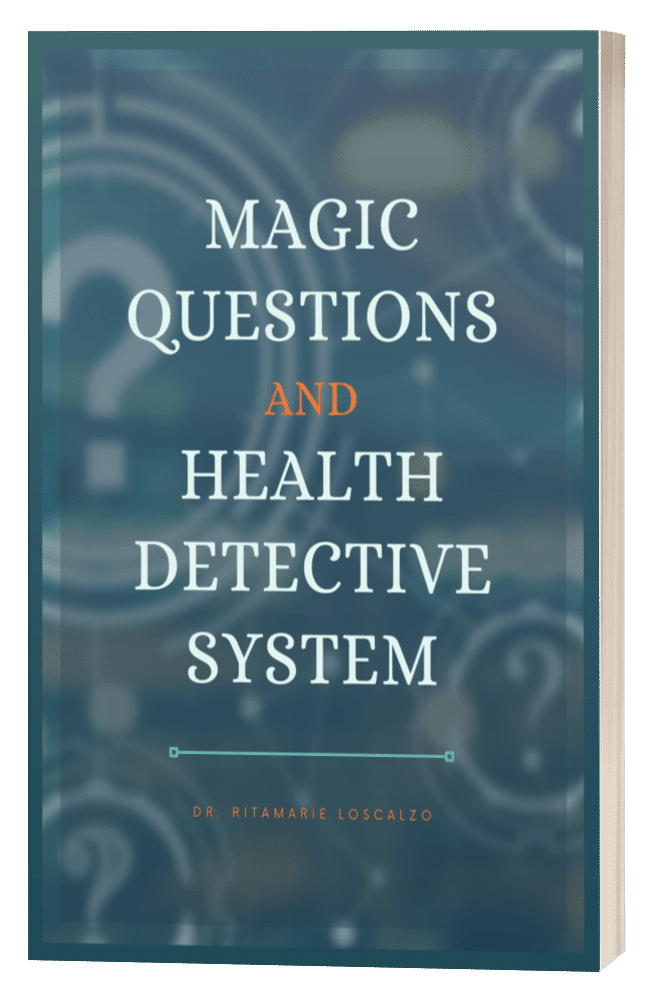
Are you feeling stuck?
Do you feel as if something is missing from your practice that's keeping you from delivering breakthrough outcomes for your clients?.
Recent Posts
Our Programs
Nutritional Endocrinology Practitioner Training (NEPT)
The Mastery and Certification tier is our flagship program and provides everything you need to feel confident as a practitioner who knows how to get results that lead to healthy and happy clients.
Functional Assessment Mastery
Explore the relationships between the most important hormones and their relationship with nutrition.
Functional Nutrition Mastery
Learn how to support your clients to eat and supplement in a way that reduces and eliminates chronic symptoms.
Medical Disclaimer: The information on this website is not intended to replace a one-on-one relationship with a qualified health care professional and is not intended as medical advice. It is intended as a sharing of knowledge and information from the research and experience of Dr. Ritamarie Loscalzo, drritamarie.com, and the experts who have contributed. We encourage you to make your own health care decisions based upon your research and in partnership with a qualified health care professional.
Disclosure: Sometimes (but not always), when I share resources in my programs, newsletter, and on my website, I'm using an affiliate link, which means I do make money if you buy. My credibility is extremely important to me; therefore, I only endorse the products, services, and people I believe in. DrRitamarie.com is independently owned and the opinions expressed here are my own.
Click here to see our Privacy Policy.


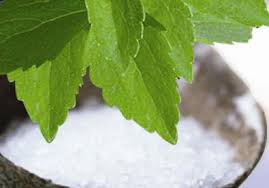 of insulin. Stevia is about 300 times sweeter than sugar, so only tiny amounts are needed for sweetening. I’ve never found any reports of toxicity with Stevia. The downside of using Stevia is the slightly bitter aftertaste. The aftertaste has been reported to be neutralized when Stevia is used with xylitol, in the ratio of 12 parts xylitol to 1 part Stevia. Whole, fresh green leaf Stevia has less of an aftertaste than the while stuff.
of insulin. Stevia is about 300 times sweeter than sugar, so only tiny amounts are needed for sweetening. I’ve never found any reports of toxicity with Stevia. The downside of using Stevia is the slightly bitter aftertaste. The aftertaste has been reported to be neutralized when Stevia is used with xylitol, in the ratio of 12 parts xylitol to 1 part Stevia. Whole, fresh green leaf Stevia has less of an aftertaste than the while stuff.
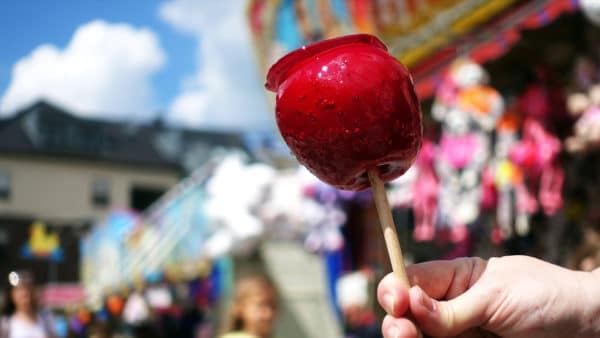


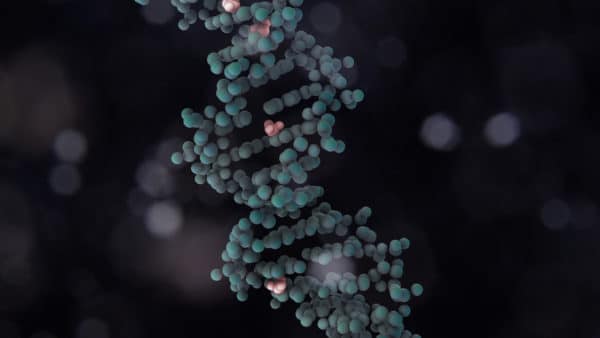
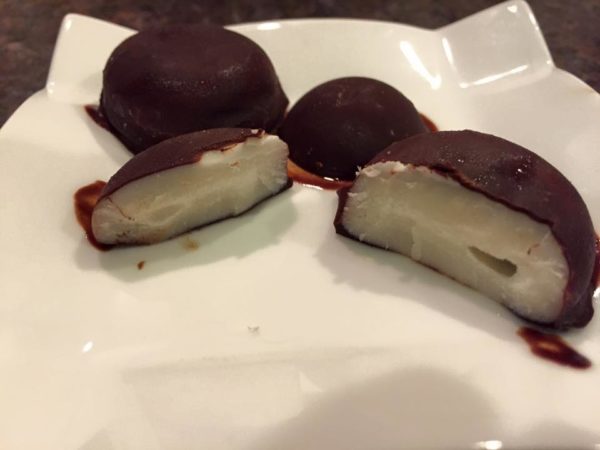



Dr. Ritamarie,
Thank you for your article. I found it to be one of the more insightful ones I’ve read recently on sugars. Using the glycemic index as an absolute is something I’ve been a bit skeptical of over the past years as many of our natural whole foods (such as fruits) rate very high on the index. In some ways, only controlling GI, although it has benefits, seems like it could be just another “fat-free,” “low-carb,” or similar diet trend if the focus is only there. It seems as though even people that want to go back to the way nature made things (getting rid of modern pesticides and processed foods), still want to use modern science (GI for example) to dictate what they eat. I keep going back to the fact if people followed common sense, such as eating only whole foods (no processed sugar) and eating those in moderation, diabetes and weight issues could be solved. What do you think?
On a side note, I notice you are a fan of dates. Have you tried date syrup? It isn’t available everywhere yet, but can be purchased here – http://www.OrganicsAreForEveryone.com
Thanks again for all the time you put into spreading the wealth of your knowledge.
[…] The Bitter Truth About Sweeteners […]
[…] Read the full article on my blog […]
Thank you, Dr.Rita Marie, for this great informative article. It was very timely for me!
Thank you, Dr. Ritamarie, for an excellent post, covering some things I’ve been wondering about since hearing the controversy on agave. I wasn’t sure about some of the powders, and figured the old standbys of honey, molasses, and maple syrup were about all that were left. This is *very* much appreciated!
Aha! I have been wondering about the agave! I’ve been using stevia and I like it a lot.
Dear Dr.,
Glycemic research laboratories has blacklisted Stevia. They seem to be saying that it does register on the glycemic index,and that there are reports of toxicity. Any comments? Did they test pure stevia? Or several of the stevia combo products?
i need to research before i can comment. It’s non caloric and has no carbohydrates so i find it hard to understand how it can trigger a glycemic repsonse
Here is the link to the Glycemic research site that I mentioned above.
http://www.glycemicresearchlaboratories.com/SteviaReport.htm
Fantastic article and a lot of information I had been looking for about agave! It was what I was substituting when I first began quitting sugar and it did end up affecting me in a negative way. I was only really able to get a handle on my sugar addiction by actually cutting it all out and to stop substituting it in everything!
I will look into raw food powders as they sound very interesting!
I am all for xylitol. Made from birch trees which are abundant here in Scandinavia (where I live), I do not rely on stuff from the other side of the world (e.g. fruits from Peru like lucuma), and its health benefits are legions (read the literature about it). And no, it is NOT addictive 🙂
Cheers!
J.
Great info Rita Marie! I agree with your findings on agave and the other sweeteners. My favorites for recipes are stevia and xylitol because of their low, low GIs. Thanks and keep up the great work!
Elaina Love
Thank you for your in depth article. Can you please tell me if LUCUMA contains fructose? I will not use Agave as it is 95% fructose. I am finding it hard to find the nutritional data on LUCUMA. Thanks again for the hard work Jenny
Thanks for writing in Jennifer! If you’re looking for feedback from Dr. Ritamarie, I encourage you to become a member of our VITAL Community where you can get access to Dr. Ritamarie via the monthly VITAL Q&A call. It’s the perfect place to ask your question about lucuma. You can register here: http://www.VITALHealthCommunity.com. If you’re looking for in-depth support and personal coaching, she works one-on-one with clients in the Energy Recharge Coaching program: http://www.EnergyRechargeCoaching.com Best wishes! ~ Stacey
I would like to know the answer to the question posed by Jenniefer too. I am diabetic and it is vitally important to know how lucuma impacts on blood sugar. Can you not just answer the question without directing us elsewhere ? It seems like a pretty straightforward question and we have bote been struggling to get hold of this information it seems. Or is this thread just more about PR and getting people to sign up for things ?
Hi Caroline,
Thanks for your interest and question!
Dr. Ritamarie’s time is extremely precious (I have yet to meet a person who could maintain the number of hours she works and dedicates to creating a true HEALTH care system — I wish I could show you her calendar!!)
To make her time count the most, she has created opportunities for people to learn from her valuable expertise in very affordable ways. The VITAL Community is her most affordable access point for personalized coaching and questions and answers. And where people can’t afford to spend even a $20 trial membership for two months of access to her resources, she has all sorts of FREE resources to help answer questions.
She also offers many free webinars and invites questions and answers on those as well. For instance, there is a free blood sugar balancing webinar coming up this coming Wednesday, October 29th: https://drritamarie.com/wp-clone/vibrant/blood-sugar-balancing-webinar. While it’s primarily for practitioners, you are welcome to register and could learn a lot by attending and even submit your question.
For the general public, you can always access her free series on blood sugar here: http://www.ByeByeB4.com.
I’m sure you could appreciate that we receive hundreds of personal and health questions. Dr. Ritamarie dedicates her time to creating resources and putting her time where she will have the most impact for the most people, yet she still makes herself available for one-on-one questions and answers through her programs.
This blog is one of the ways she shares her vast knowledge freely with the public. We do welcome you to register for a free webinar or take part in an affordable trial membership through the VITAL Community: http://www.VITALHealthCommunity.com. Then you can see for yourself the value in having her answer your question directly. And or course we encourage you to enjoy the continued benefit of the information that’s available for free here and through our educational webinars (like the ones above).
Wishing you vibrant health,
Stacey Terry
Vibrant Living Program Assistant
For Dr. Ritamarie Loscalzo
Hi, Caroline,
In reviewing your question, we also did find another blog post Dr. Ritamarie did on the question of sweeteners. We encourage you to read this post to learn more for yourself.
https://drritamarie.com/wp-clone/blog/2013/03/11/the-sweetest-of-them-all-part-2/
Lucuma’s sugar content is low. The percentage amount present in the dried pulp from mature lucuma fruit is: 8.4% glucose, 4.7% fructose, 1.7% sucrose, and 0.06% inositol.
As always, Dr. Ritamarie advocates testing with a glucose meter, especially several times after eating something new. Keep a chart and see how your body does with the use of lucuma as a sweetener.
We hope this helps.
[…] For more information: https://drritamarie.com/wp-clone/blog/2010/02/23/the-bitter-truth-about-sweeteners/#.dpuf […]
with to know which is the best natural for type 2 diabetes also pl confirm whether it is available in India
Rgds
Satish
Hi, Satish,
Stevia is an excellent natural sweetener that you should be able to find in India, and, when used in small amounts should not have too much affect on someone with type 2 diabetes.
Regards,
Lynn DeBuhr Johnson
Dr. Ritamarie Programs
[…] fruit – organic mixed tropical fruit is an […]
[…] drops chocolate or other flavored stevia, or erythritol, inulin, or other low-glycemic […]